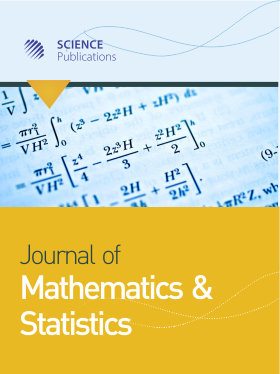Statistical Analysis of the Risk Factors of the Major Epidemic Disease Among Residents of Sekondi-Takoradi Metropolis (STMA)
Abstract
Problem statement: This study focused on statistical analysis of risk factors of the major disease among residents of STMA. The objectives of the study were to find the predominant diseases affecting residents in the catchments area. The study was also meant to identify risk factors associated with the incidence of the predominant disease. Approach: Purposive sampling technique was used to select residents from the target population. A structured questionnaire was used to obtain information from the sampling units. The data was analyzed using measures of risk, principal component analysis and chi-square tests. Results: Malaria (68%) topped the list of predominant diseases. It was also found that (44%) of those who had been diagnosed of malaria disease lived around swampy areas. The absolute risk value (78%) suggested that people living around the swampy area were at risk of infection by malaria parasites. The absolute risk value of 62% for dwellers of non-swampy areas indicated that aside the environmental factors there are other factors which were associated with the incidence of malaria. The principal component analysis results showed that; diets, social and educational status affect the incidence of malaria. The p-value of the chi-square test on two risk factors (environment and ones family history) were also significant, indicating that there was an association between the incidence of malaria in the catchments area and the identified risk factors. This result confirmed earlier researches that sought to investigate the relationship between diseases and environmental factors. Conclusion/Recommendations: It was revealed that apart from environmental factors and family history; diets, social status and educational background play an important role in the health of the residents. It was recommended that STMA takes the appropriate measures to prevent 6 people from the risk factor at any case.
DOI: https://doi.org/10.3844/jmssp.2009.146.151

- 3,983 Views
- 2,544 Downloads
- 1 Citations
Download
Keywords
- Risk
- swampy
- environment
- malaria
